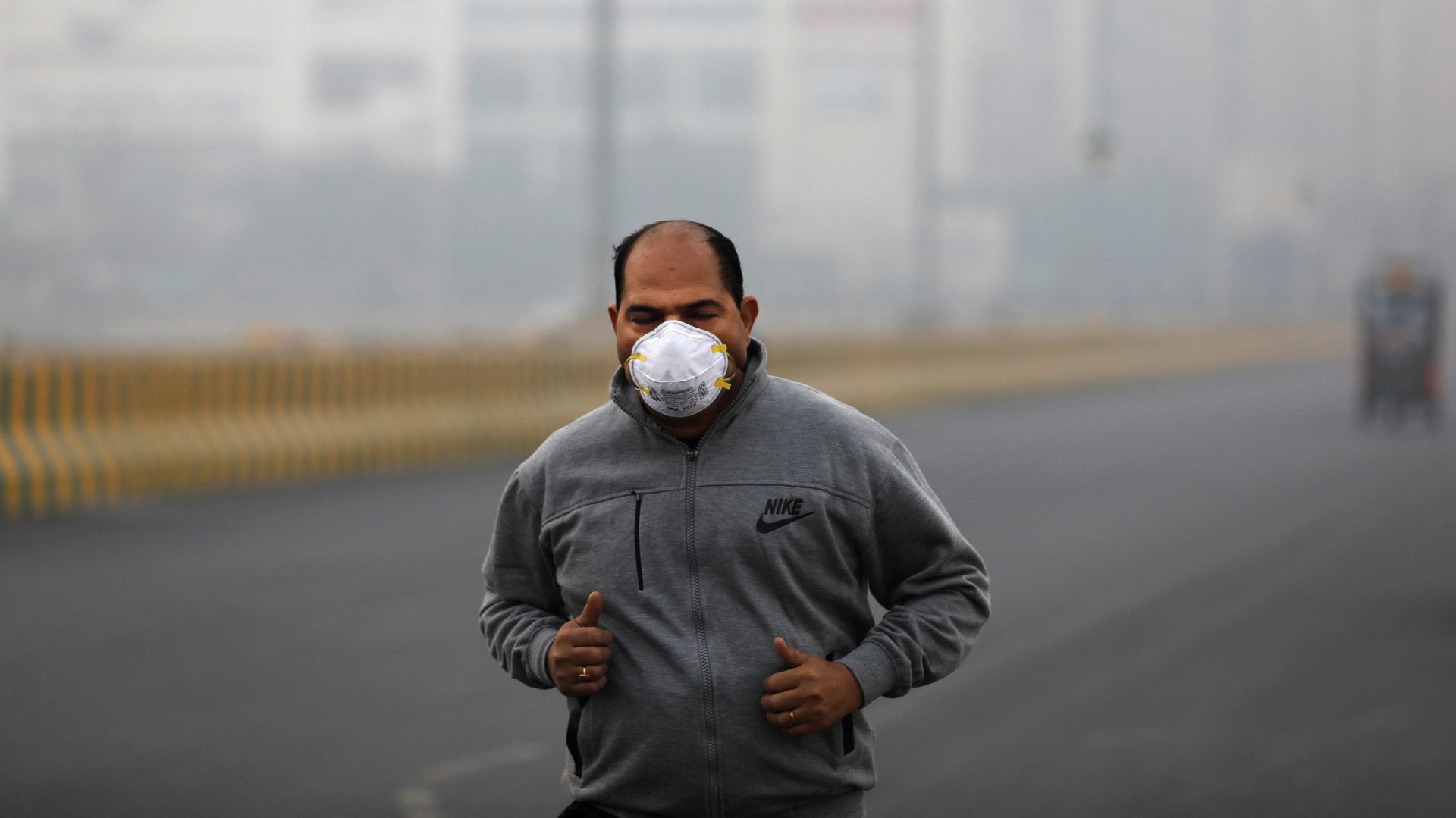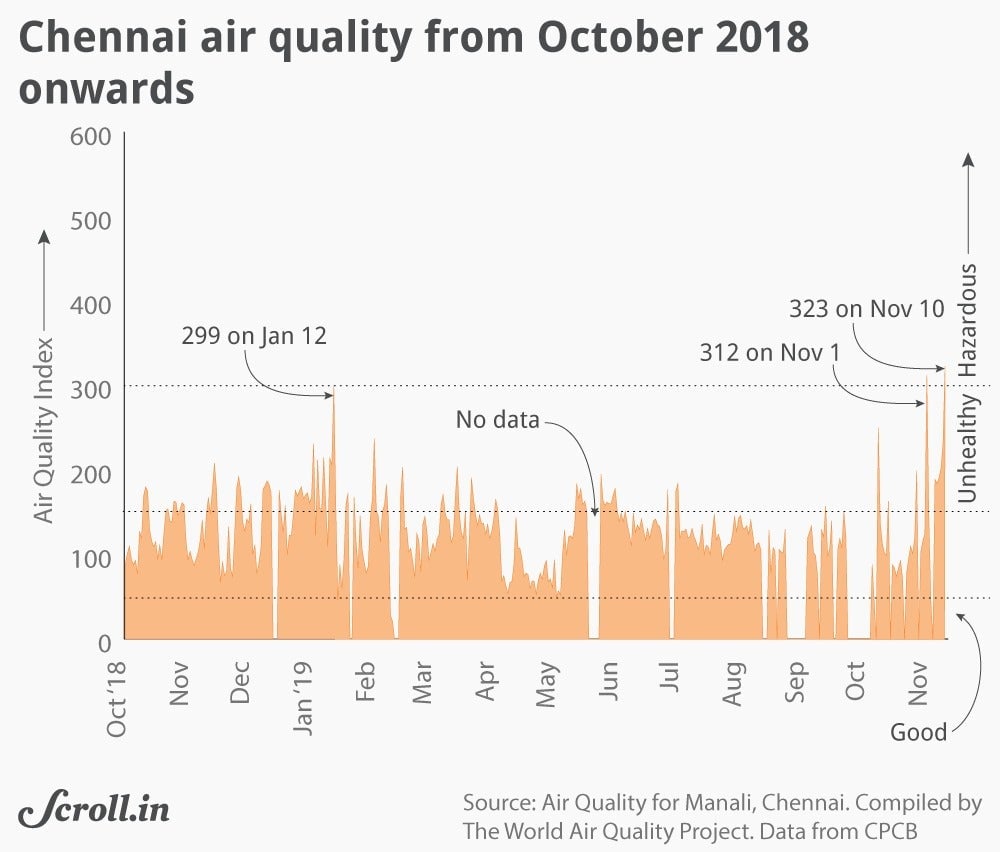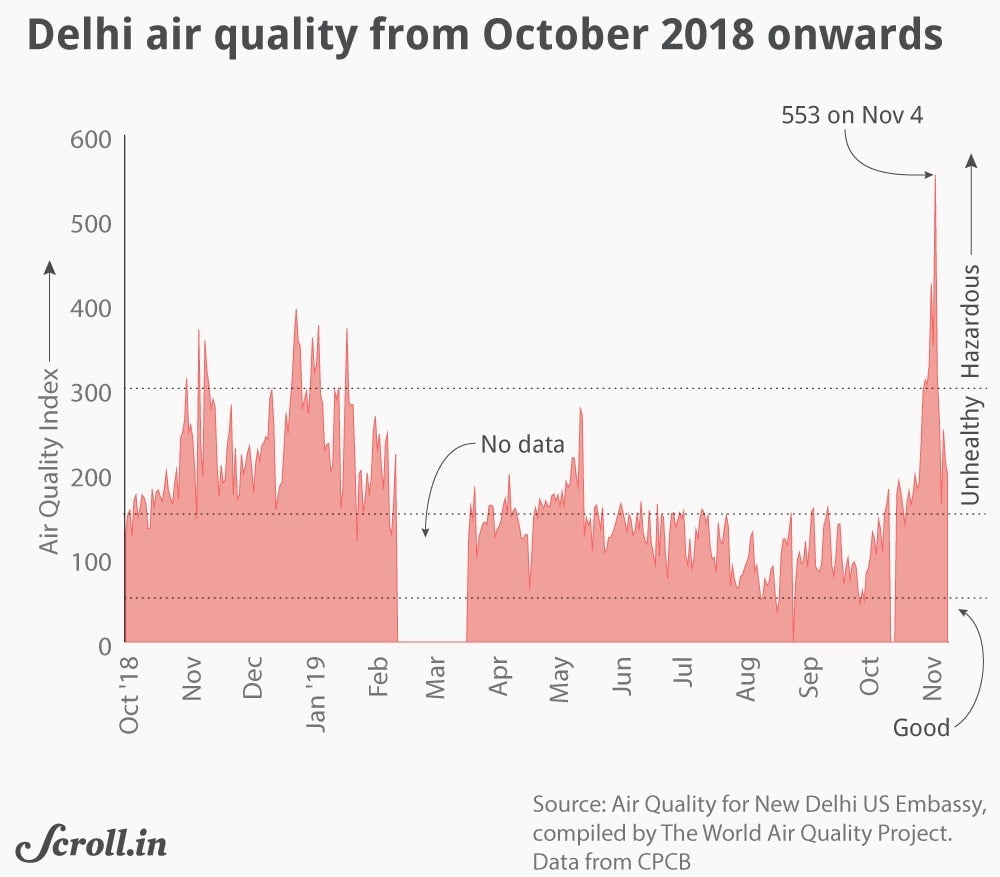Did Delhi’s deadly smog just move 3,000 km to the south?
On the morning of Nov. 4, Chennai awoke to find a haze that had enveloped the entire city. Chennai has its share of industrial and vehicular pollution but the haze on that day was considered unusual because the city lies on the coast. This means that it enjoys moderately good air quality, since its polluted air usually drifts away into the Bay of Bengal.


On the morning of Nov. 4, Chennai awoke to find a haze that had enveloped the entire city. Chennai has its share of industrial and vehicular pollution but the haze on that day was considered unusual because the city lies on the coast. This means that it enjoys moderately good air quality, since its polluted air usually drifts away into the Bay of Bengal.
What caused the smog?
Residents in Chennai were puzzled when the city’s air quality index crossed 200. Levels above 50 are considered unsafe for human health.
On Nov. 3, R Pradeep John, a Chennai-based weather blogger claimed that the smog from North India that was drifting eastward would be pulled down towards the south as a result of Cyclone Bulbul. The cyclone intensified over the Bay of Bengal, before making landfall in West Bengal.
“The smog would have travelled eastward and dispersed itself there had it not been for Cyclone Bulbul,” John told Scroll.in. He also said that local factors and lack of winds could have played a part. And not only Chennai, but the smog also spread to Odisha, Andhra Pradesh coastline and Sri Lanka, John claimed.
The Kolkata air quality dropped in the last days of October and the early days of November. Air quality in Visakhapatnam—also on the east coast—worsened quite suddenly in the first few days of November.
Lauri Myllyvirta, an analyst at the Centre for Research on Energy and Clean Air, a think tank studying pollution, posted a simulation on Twitter that traced the path of the smog through the Bay of Bengal and to Chennai. He said, “The typical wind pattern that you have for the season is that you have this slow-moving air mass travelling from the North Gangetic plain from the West to the East, and it blows out West Bengal and Bangladesh into the Bay of Bengal and then it kind-of loops back.”
However, government scientists dismissed the claims that Chennai received a share of North India’s bad air.
“No, it is not possible for the winds [carrying the North Indian smog] to have travelled to Chennai,” said Mrutyunjay Mohapatra, the chief of India Meteorological Department. Mohapatra said that the smog could have travelled eastwards.
Another IMD scientist also had his doubts over where Chennai got its smog from. “It is difficult to say that the smog travelled south,” said DS Pai, head of the department’s climate and research services in Pune. “Delhi and Chennai are almost 3,000 km apart. It (the smog in Chennai) should be because of local factors along with moisture in the air because of low pressure systems.”
As Chennai residents were faced with alarming pollution levels, the Tamil Nadu government blamed the poor air quality on Cyclone Bulbul and the Central Pollution Control Board’s monitoring systems, The News Minute reported on Nov. 11.
The report also quoted a government official who claimed that the air quality levels recorded by the state pollution control board were at least 100 points lower than the levels recorded by the Centre’s monitoring agency.
“We have 28 stations across the state. And the CPCB and mobile units show different figures, so this could be a problem with the Centre’s systems,” J Radhakrishnan, the commissioner of revenue administration, was quoted in the report. He also added that the city’s vehicular emissions and garbage burning would be checked.
Here is an animated image of the particulate matter and wind patterns on the Earth Wind Map, a project that maps data from the Copernicus Air Monitoring Service of the European Union. The simulation does appear to show the smog moving towards the east and thence towards the southern coast, looping over the Bay of Bengal. Some smog originates over Chennai as well.

Air quality
The most dangerous part of smog—and the reason for plummeting air quality—is the tiny particles called PM 2.5, formed by dust, soot and smoke. PM 2.5 is a blanket term for particles that are smaller than 2.5 microns. Ten thousand of them laid in order would form a line an inch long. That line would still be 30 times thinner than a single human hair.
These particles are so small that they remain suspended in the air, making it look hazy. None of the body’s usual protections work when they are breathed in. Nasal hair cannot stop them, nor can the mucus in the windpipe. They pass through to the lungs and embed themselves deep within alveoli: the tiny sacs that the lungs use to exchange oxygen for carbon dioxide with the rest of the body.
The lungs are surrounded by bands of muscle. When the lungs are irritated—as they are by these fine particles—these bands of muscle tighten, making the lungs contract and the breathing tube narrow, in an effort to keep the irritant out. Except, the irritant is now the very air of the city.
The particles are so small that they also pass through the alveoli, and into the blood. From there, they make their way through the body and to the heart. There, especially in people who already have weak hearts, these particles could irritate the arteries, dislodge plaque and form blood clots.
But was this the first time air quality levels plummeted in Chennai?
Air quality levels in Chennai hit a 12-month high in November, although in Manali—an industrial area—there was a sudden peak on Nov. 1 which could not be imputed to the slow-moving North Indian smog. Air quality improved for a couple of days after that, but worsened after Nov. 5, hitting a high on Nov. 10. It must be noted that this was only air quality measured at one station and using one of many possible methods of indexation.

In comparison to Chennai, Delhi’s air remains in the “unhealthy” category for several months in a year and frequently turns hazardous in the winter.
The smog across North India has become an annual event. Schools continue to remain shut as multiple factors like vehicular emissions and construction dust lead to the haze in the national capital region. Additionally, crop burning in neighbouring states was delayed this year because a late monsoon that postponed the harvest season.

This article first appeared on Scroll.in. We welcome your comments at [email protected].